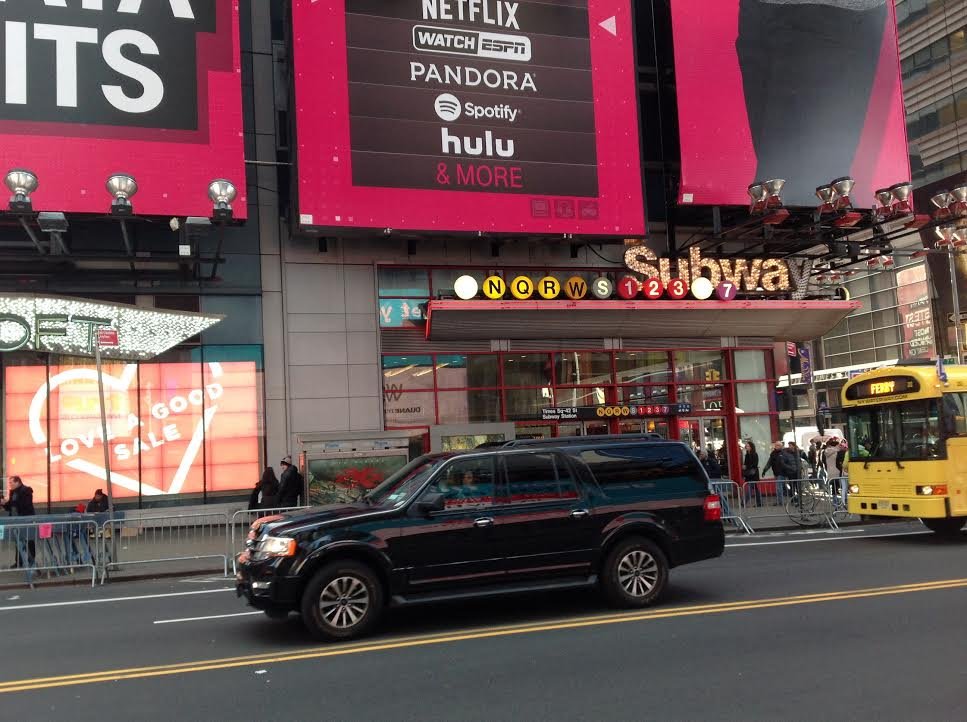Federal Reserve Bank's Activities
Times Square scene in New York city
Making It Harder to Borrow in a Hot Economy
If the Gross Domestic Product(GDP) is growing too fast, it means primarily that consumers are spending a lot of money (because consumer spending makes up the majority of the GDP). As you may have already learned in another section of this website, when a lot of people with a lot of money are trying to buy the same goods, this typically results in inflation. (Recall that we discussed how on Valentine’s Day, roses are more expensive because more people want roses on that day). Things in general become more expensive when too many consumers have money (either money from their jobs or money they have borrowed) to buy these items.
To stop consumers and others who contribute to the GDP from spending too much money too fast, the government (specifically, through the Federal Reserve Bank, often just referred to as the Fed) makes it harder for people to borrow money by increasing the discount rate. This increase, which is known as “tightening monetary policy,” eventually makes it more expensive for consumers and others to borrow money from banks. With less money being borrowed, there is less spending. This eventually reduces consumer spending, reduces the possibility of inflation, and causes the GDP to go down.
Making It Easier to Borrow in a Slow Economy
If the GDP is not growing at all, it probably means that consumers are not spending much money at all. To encourage people to spend more, the Federal Reserve can decrease the discount rate, which eventually makes it easier for consumers to borrow. This action is known as “loosening monetary policy.”
Further Explanation as to Why the Fed Interferes
You might be puzzled as to why the Federal Reserve has to interfere in the economy in the first place. The first question you might be asking yourself is why the Federal Reserve will raise rates to stop inflation. The best way to think about the Federal Reserve’s action is to think of the economy as a train that is running on a schedule. A train that is going too fast can derail and crash. This is what happens when the economy is too hot because of high inflation.
Much like the operator of the train who taps on the brakes to slow the train down, the Federal Reserve raises the discount rate to discourage people from borrowing and spending too much so as to slow down the economy and stop it from derailing.
If the train is going really slow, it will not meet its schedule. Much like the operator who tinkers with the train’s engine to increase its speed, the Federal Reserve stimulates the economy by reducing the discount rate to encourage more people to borrow and spend.
The following passage from The Wall Street Journal (June 9, 2000) summarizes some of the concepts we have been teaching regarding the economy and the Fed’s action to keep it stable:
The Nasdaq Composite Index gained 19% last week following a report that unemployment was rising and that businesses were eliminating jobs. That was bad news for job seekers, but it stirred hopes that the economy is slowing. If it starts seeing results from its yearlong campaign to cool the economy, the Fed might finally stop raising rates. Rising rates have been the main brake on the stock and bond markets…. While a slowing economy would help stocks, economic strength could send stocks down.
The Federal Reserve’s actions to keep the economy on an even keel make sense if you pause and give it some real thought. The only problem is that it is very difficult to know how quickly, how hard or how long to apply the brakes on the economy, or how much stimulation is needed to get the economy moving again.

